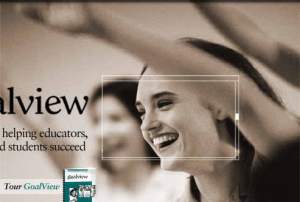Capstone-Standard 04 Meta-Reflection: Pedagogy
Engages students in learning experiences that are meaningful, stimulating, and empirically proven to promote intellectual growth.
Initial reflection during C & I Orientation:
The learning experiences I provide for my students should be interesting, inspiring, and research-based. Instruction to promote thinking skills should be delivered in the student’s least restrictive environment. Additionally, I must keep up-to-date and aware of methods and techniques to actively involve my students in the learning process.
Meta-Reflection following completion of EDU 6526 Survey of Instructional Strategies
Amazed by the Gifts of my Colleagues~
As I reflect on what I have learned in this course entitled Survey of Instructional Strategies, I have much to consider. Reflecting on this past week, filled with reading the papers written by my colleagues and the corresponding comments from our peers, I am filled with a sense of amazement. The quality of their work as graduate students, their professionalism as educators, and their integrity as individuals who desire to give of their best to others is overwhelming. I believe the richness of their gifts, the creativity evidenced in their endeavors, and their dedication as lifelong learners will continue to impact the future in positive ways. I feel privileged to have shared this quarter with these outstanding people of character. A few of the many highlights, according to the “research”, noted in Blackboard Discussions: Final Papers for Peer Review—Seattle Pacific University (2012) are as follows:
Positive Student Behavior—Cara Botz, Collaborative Learning in the Resource Room–Amy Guatelli, Cooperative Learning & Middle School–Connie Taylor, Cooperative Learning–Josh Auckland, Character Education–Keri McManus, The Use of Direct Instruction in Response to Intervention Models–Sara Mirabueno, Josh’s Final Paper–Joshua Hollingsworth, Cooperative Learning in the Classroom–Allison Shannon, GRR–Mackenzie Quartly, DI and Constructivism–Elle Sauro, Inductive and Inquiry Models and My Teaching–Chris Howell, Developmentally Appropriate Practices in Kindergarten–Amanda Burke, Nonlinguistic Representations–Melissa Klein, Constructivism and Concept Attainment–Philip Benson, Concept Maps for All–Laurie James, Nonlinguistic Representations for English Language Learners–Meagan Wilson, Vocabulary Instruction in the Elementary Grades–Kami Cottrell, Project Based Learning–Jessie Scanzon, Nonlinguistic Representations–Julie Schocken, Reciprocal Teaching–Taylor Hansen, In Defense of Direct Instruction–Aimee Chew, Cooperative Learning–Emily Whitten, The Power of Feedback–Alison Brynelson, Homework Purpose and Considerations–Jim Mendes (2012).
If time and energy permitted, I would create concept maps representing themes from each topic and show the interrelationships between key ideas, create connections between old and new learning, etc… and these would serve as a powerful review strategy for this course!
I would like to call particular attention to a comment from Keri McManus, who was my peer review partner for the final paper. Within her paper entitled, Character Education: An Effective Instructional Model to Promote Student Well Being, Cultural Competency, and Academic Achievement she states, “I integrate character education through teachable moments as they arise in my classroom…”(McManus, 2012). Indeed, a worthy goal I hope to strive for each day.
Our professor, Dr. Tracy Williams, set high academic standards for us to reach. She has successfully led us through times of “wind, rain, and snow (with or without power)”, and has maintained continuity for us—despite her own encounter with grief in the loss of a family member. I am grateful for her as a person and am thankful for her vital encouragement along the way.
On an even more personal level, I wonder: Has the greatest learning and revelation during this course come to me as a learner? as a teacher? or as a wife, mother, and grandmother striving to maintain a sense of balance in the midst of learning and teaching? Perhaps the revelations have come in waves—encompassing all three facets of my life. At times, the waves have threatened to overtake me, but as I’ve prayed (without ceasing), I’ve come to understand (and remember) that I can tread water and breathe at the same time. God’s power has provided the courage needed to persevere. He never changes, and will never fail to bless beyond measure. Laurie~
“When you go through deep waters, I will be with you.
When you go through rivers of difficulty, you will not drown”.
The Bible, New Living Translation (©2007)
Artifacts for Standard 4
Paper: Concept Maps for All–retrieved and scanned Please note: The digital form of my original paper was lost, due to a computer virus, therefore, I scanned and attached my hard copy. In the process, the formatting became very distorted.
Module 1 Reflection:Cultural Competence–a work in progress~
Module 2 Reflection:Encouraging words…”Reinforcing Effort and Providing Recognition”~
Module 3 Reflection:Discovering “Induction/Inquiry” processes in our midst~
Module 4 Reflection:The “Big Idea” of Concept Attainment~
Module 5 Reflection:Announcing…Advance Organizers!
Module 6 Reflection:Excellence in Constructivism~
Module 7 Reflection:Encouragement with Respect~
Module 8 Reflection:Character Education: In the midst of this process called “life”~
Module 9 Reflection:Direct Instruction—With Flexibility~
